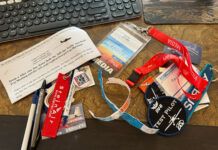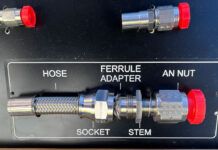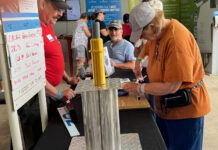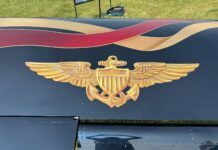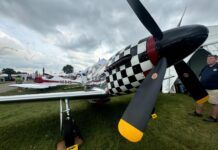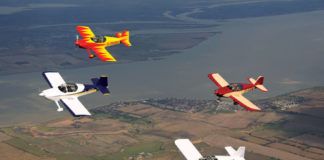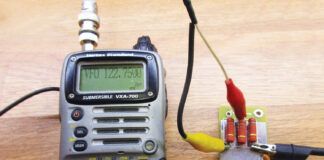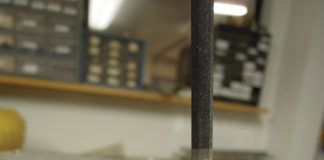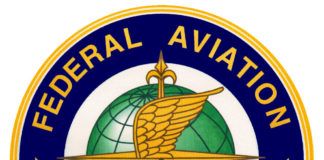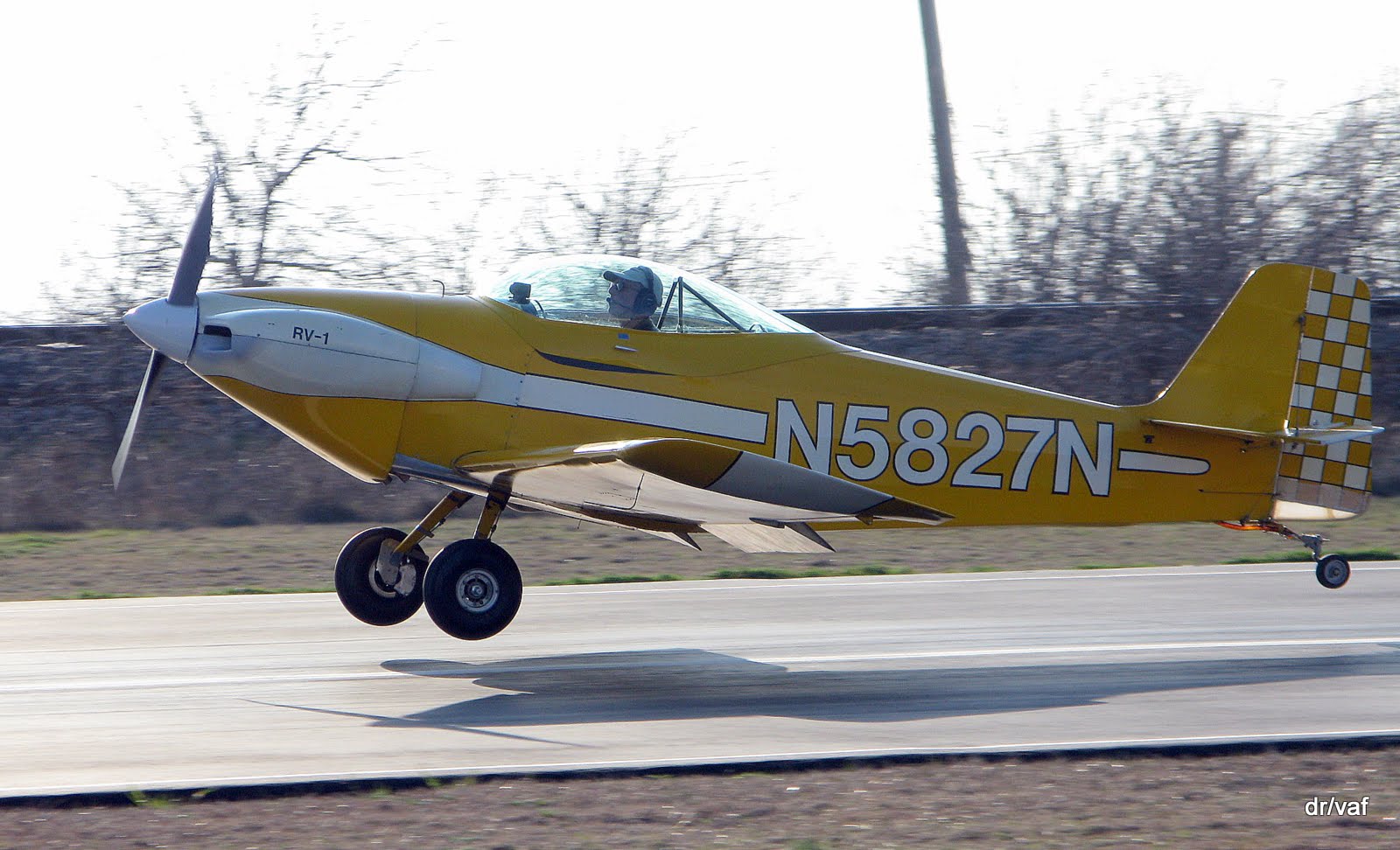
After nearly a year of restoration work by countless volunteers, the first “reflight” of the VanGrunsven RV-1, N5827N, occurred on February 19, 2012 from Hicks Airfield (T67) near Fort Worth, Texas. Winds were light, favoring Runway 14. The aircraft had been in a non-flying status for several years before being acquired by the nonprofit Friends of the RV-1, and it will now begin a tour of the United States and Canada that will end at AirVenture 2012.
Flight Report
Taxi and takeoff were normal for a taildragger. The brakes are definitely sensitive, but once they’re calibrated, it should not be a problem. Caution is advised the first time they are applied, however. Lateral stability on the ground is not as positive as most RVs. Once the tail starts to swing, the airplane feels like it would have a tendency to go around, more like a normal taildragger than the typically stable RVs. The tailwheel is firm, and sends considerable feedback through the airframe when hitting bumps, but no damage appeared to result from this.
Takeoff was normal for an RV; the tail came up in about 1000 to 1500 feet of roll, acceleration was good, and control at lift-off was positive. Speeds weren’t recorded on this flight, as we really don’t know how accurate any of the instruments are. The initial climb rate was quite good, about what I would expect for the horsepower. The airplane felt well-trimmed with the tab in a neutral position, and pitch forces were normal.
The airplane was climbed to 3000 feet over the field (field elevation approximately 850 feet), and several orbits were performed to evaluate handling. In typical RV fashion, roll and pitch are harmonious, and the rudder is fairly heavy at normal flight speeds. Roll and pitch are sluggish compared to a modern RV, but perfectly adequate and not out of the ordinary for production aircraft. Comparing it to modern RVs, the controls are more like an RV-8 than an RV-4: good, but not at all light. Trim is quick, but the range is not great. I did turns to both left and right, and stability seemed strong in all axes.
Most of the cruise testing was done at about 2350 rpm, but the tachometer calibration seemed questionable. Airspeed was about 140 mph indicated at that setting. Flaps were lowered through the full range below 100 mph, and stability was good. I did not approach stalls, though the landing behavior was excellent, so I anticipate good stall characteristics. Oil pressure was solid at 80 psi, and oil temperatures never got above 140 to 150 degrees. The VSI reads in the correct direction, but calibration is unknown. The airspeed indicator and altimeter appear to be reasonable. The compass may or may not be adequate, and we will have to evaluate further.
After orbiting the field several times, I left the pattern, flew about 4 miles to a neighboring field, then returned for a pattern entry.
Below 100 mph, I lowered the flaps two notches on the downwind leg. Trim was all the way nose up, but additional backpressure was required to hold an approach speed of about 75 mph. This was not uncomfortable, but it appears inadequate trim force is available to hold a slow approach speed. I considered lowering full flaps on final approach, but the geometry of the cockpit and flap lever made this too difficult to attempt on final, so I made the landing with two-thirds flaps.
The landing round-out/flare was positive, stable and easily predictable. I made a three-point landing on the first try, and didn’t apply the brakes until it was clear the airplane was done flying. Control was good, and there was no tendency for it to depart either right or left. The brakes are sensitive, but the airplane was well behaved on roll-out.
Test pilot: Paul F. Dye; Photo: Doug Reeves.

